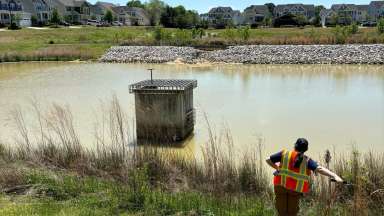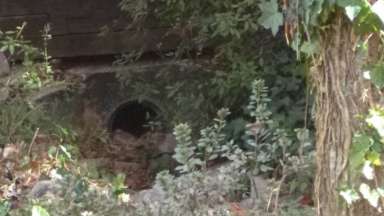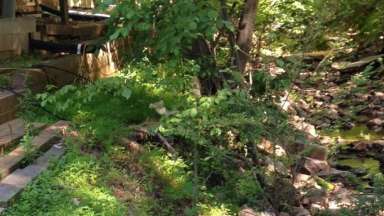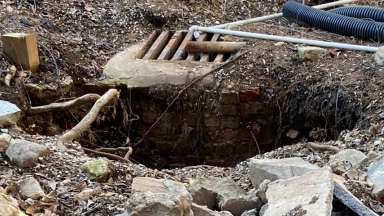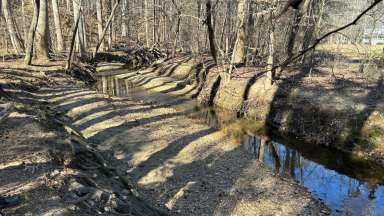Jump To:
Construction Inspections
Once a permit is issued, inspections occur at construction sites at least once every two weeks. Inspections are covered within two regions of Raleigh:
- East Region: Serves east from Six Forks Road to South Saunders Street;
- West Region: Serves west from Six Forks Road to South Saunders Street.
Please see the Construction Inspections Section’s Regional Map for contact information.
As-built Certifications
Once construction of a stormwater device is complete, an as-built certification form as well as an as-built plan and certification (issued by a licensed professional engineer, registered landscape architect, or professional land surveyor) must be submitted.
As-built certifications are only accepted electronically and emailed to AsBuiltSubmittal@raleighnc.gov (effective March 20, 2017). Print copies will no longer be accepted.
Here is what you will need to complete the as-built certification process:
- You will receive an inspection report from a City stormwater inspector who has verified that the stormwater device is installed appropriately and that it is operating properly. The inspection includes ensuring that the device and area draining to the device are completely stabilized;
- The certification process includes providing a completed as-built certification form (Form 511), inspection report, and photos that represent the current condition of the stormwater device;
- The as-built certification must be signed and sealed within seven days of the date that the document was emailed to City staff; and,
- Please allow seven calendar days for City plan reviewers to accept or reject an as-built certification. A certification will not be approved for review until all required items are provided.
Soil Erosion and Sediment Control
Any land-disturbing activity over 12,000 square feet in size is required by code to have a land-disturbing permit prior to the activity beginning. Once a permit is issued, the Stormwater inspector conducts a pre-construction meeting with the grading contractor and/or the developer to meet the inspectors that will monitor the site and communicate project requirements.
Once, the erosion control devices, as shown on the approved erosion and sedimentation control plans, are installed, an inspection is required by the inspector to ensure the devices are installed correctly. If the installation is correct, the grading process can begin on site. Once the inspection has been approved, the Stormwater inspector will conduct routine inspections to ensure the erosion control devices are being maintained and are adequate to retain sediment on site. The inspections of the site will continue until all work is complete and the site is stabilized.
Single Family Erosion Control
There is not a requirement to obtain a land-disturbing permit when building a single family home with less than 12,000 square feet of land disturbance. However, installation of erosion control measures are required for all single family lots regardless of size of disturbance. At a minimum, required measures include:
- A construction entrance utilizing 2-3" stone which measures 30 ft deep x 10 ft wide.
- Silt fence installed on low ends of site and back of curb to ensure utilization of construction entrance.
The Stormwater inspector will typically conduct an inspection once the footers are poured to ensure that erosion control measures are installed and maintained.
Flood Prone Areas
A "Flood Permit" is required for any activity conducted in/or adjacent to a flood prone area. Once a permit is obtained, the Stormwater inspector checks the site for installation of benchmarks and, upon completion, ensures that work is conducted per the approved permit. The inspector also requires that all necessary certifications (FEMA) are completed for the activity.
Watershed Protection
Development activities in water-supply watershed protection areas (Falls Lake, Swift Creek, and Richland Creek watersheds) are required to obtain a stormwater tracking permit. Upon completion of the project, the Stormwater inspector ensures that necessary surveys have been performed, stormwater devices are installed and/or impervious surface limits are not exceeded.
Watercourse Buffers
The City of Raleigh lies within the Neuse River Basin and is subject to riparian buffer requirements. These buffers typically extend 50-feet from the top of a stream bank on each side of the stream. The NC Division of Water Quality enforces the buffer rules. However, the City requires a "Buffer Permit" for development activities on all properties that may contain surface waters subject to the riparian buffer rules. When a "Buffer Permit" is issued, the Stormwater inspector ensures that all watercourse buffers on the property are properly flagged and that no prohibited activities occur in the buffer.
